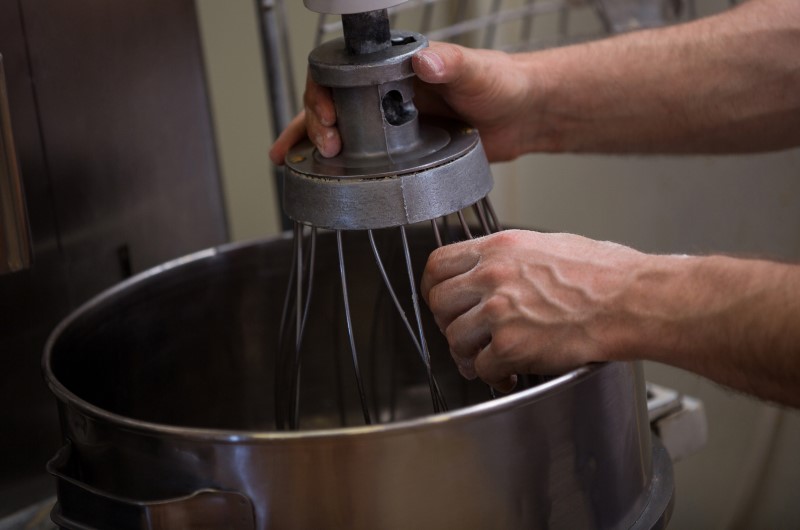How often Grinders Plates and Blades should be Replaced?

Grinders and blades are the most essential commercial meat processing equipment and often the most overlooked. Whether you are planning to run a butcher shop, supermarket or large-scale meat plant, the grinder plates and blades are what make or break the quality of your final product. Dull and worn-out components not only affect consistency and texture but also strain the motor, reduce throughput and pose safety risks.
So, how often should you replace these essential equipment parts? The answer depends on several factors, including how frequently the equipment is run and what type of meat is processed. Most importantly, how well you maintain the parts and equipment itself.
Let’s break down several factors on why and when you should replace your grinders and blades for optimal equipment performance.
The Role of Plates & Blades in Meat Grinding
Grinder blades work in tandem with the grinder plate to break meat down into uniform pieces. As the meat is fed into the grinder, the rotating blade cuts it against the holes in the stationary plate. This cutting action determines the texture, speed and cleanliness of your grind.
Over time, friction and pressure cause the edges to wear down. When either component becomes dull, the grinder starts smearing the meat rather than cutting it clean. You will notice it in the final product; grinds may look mushy, sticky and uneven, especially in high-fat-content meats.
Signs to Replace Grinder and Blades
There is no universal number of hours for the replacement of any equipment, but every piece of equipment and its parts do have telltale signs you shouldn’t ignore. For a grinder and blades, the following are a few signs you need to see.
- Tougher grinding or motor strain. When the machine works harder to achieve the same results.
- Mushy or inconsistent texture. The meat looks smeared instead of being cleanly cut.
- Increased temperature of the meat. Dull blades generate more friction, which leads to increased heat and compromises food safety.
- More bone and sinew blockage. Dull parts can’t cut through fibrous or tough material effectively.
- Unusual noise or vibration. Often, there are signs that the machine is producing extra vibration or noise, or that tearing is coming. This is the right time to investigate and replace the defective part.
How Often Should You Replace Machine Parts?
The frequency of replacement of one particular machine part varies, but it is based on general guidelines and usage.
- Heavy-duty commercial use where daily grinding is required. It is best to replace the part every 1 or 2 weeks.
- Moderate grinding usage where the machine is used a few times a week. It is recommended to replace the blades or sharpen the grinders every 1 to 2 months.
- Low usage, i.e., occasional or seasonal. This indicates checking the part after every few uses and replacing it every 3 to 6 months.
It is important to replace the blades and plate together. If one is worn out, the possibility is that the other is also torn down. Replacing one part and sharpening the other part is not recommended, as they won’t align with each other.
Maintenance Tips to Extend Lifespan
Proper care and attention are required for grinders and blades in meat processing plants. A lot of dependence is based on the quality and production of meat passing through these machines. So, maintenance of these grinders and blades needs to be prioritised.
- Clean thoroughly after every use. No residual fat or protein is left on the blades, as it can erode metal over time.
- Keep the component dry and oiled, as it can protect against rust and oxidation.
- Store them in a dry, cool area to avoid getting them wet or short-circuiting.
- Store multiple sets of blades and grinder plates and use them in rotation to avoid over usage.
- Sharpen the blades to maintain the correct angle.
Final Thought
Regular replacement of grinder plates and blades isn’t just a maintenance task. A critical part of ensuring product quality, equipment longevity and safety is maintained. For high-output operations using machines, even small reductions in efficiency can result in lost time and money.
By staying ahead of wear, maintaining a replacement schedule and using the correct parts for the equipment, keep the operation of the meat processing plant smooth and safe.
